How much do you really know about your strings? By Andrew Smith
There is a huge number of strings on the market, all claiming to improve your scores with unique selling points, to grab your attention. With so many choices it can be confusing to know which is the right string for your bow, so here we will look at some of the popular options being used today.
The type of bow you shoot and following any manufacturer’s recommendations will dictate the choice of string material you use, but even then there is still a lot of choice.
Who makes your strings is also an important consideration as the performance and reliability will reflect in the build quality. Problems such as too much creep/settling down in a recurve string or problems with compound peep sight rotation are almost always down to how it is made.
All the string materials that archers use today are reliable and the chances of a string or cable breaking in normal use is rare. These days archers have a growing number of specialised string makers to choose from, who will make bespoke or standard size strings and cables.
String materials can be narrowed down into four categories: Dacron, Dyneema/Spectra blends, Dyneema blends with Vectran and Angel Majesty. Most string materials used around the world are made up of at least 90% Dyneema, this is a man-made material and the other 10% will be a chemical blend and or coating to provide different shooting characteristics, such as claiming to be faster, a softer feel to the shot, low stretch, reduced ‘fuzziness’ and consistent performance in all weather conditions.
For longbows, horse bows, some field bows and club trainer bows, Dacron is still a popular choice, it has an inbuilt stretch which offers a kinder shot.
Dyneema blends are the popular choice for modern recurve bows, the characteristics of Dyneema offer little creep and it is consistent from shot to shot.
Dyneema blended with Vectran can feel harsh and as a result it not recommended by some recurve bow manufacturers.
Compound archers benefit from a string and cables with no creep or stretch. Dyneema with Vectran and similar blends are ideal, the BCY “X” range and newer materials like Bloodline with Vectran are popular.
All on its own is Angel Majesty from Japan, shot by several top archers, it is a uniquely blended string material which over the years has been proven to offer exceptional performance and consistency.
Uniquely, once you have the correct bracing height you burnish the string with a piece of leather; this heat infusion gives you what looks like a single strand bow string. The only downside is that it is difficult to buy ready-made in the UK, so those using it tend to make their own strings.
Most commercial strings are made on machines and pre-stretched, which means that when fitted on the bow they settle down quickly and are good to go from the first arrow, with non pre-stretched strings you may find they need a dozen or so shots to settle down. If a string does not settle down once the brace height has been set, at least after shooting a short round, then this is down to how it is made, and it should be discarded.
Recurve, field bows and longbows
When buying a single string, you will need to know the length to achieve a good bracing height, material, number of strands, serving material to get a good nock fit and the colour.
By far the most common strings on the shooting line are pre-made Dyneema based Fast Flight plus with a nylon serving, most are either 16 or 18 strands (for a good nock fit) and marked up to fit an ILF 64”, 66”, 68” & 70” bow.
Whilst experts will tell you that the number of strands will affect performance, for those archers that just want to enjoy club shooting once or twice a week, these strings are a perfect balance of performance, price, and nock fit. Looked after, they will last two or three years or more.
For those that spend time tuning and retuning their bows looking for those extra competitive points, the choice of string materials is vast, with new blends and colours coming on to the market each year.
Old favourites such as BCY 8125 in 16, 18 or 20 strands are still very popular with international archers and newer materials like Mercury, 100% Dyneema Bloodline and BCY8190 where the strands are thinner offer more tuning options.
This options may be best explored with the help of a string making specialist who can help guide you.
Nylon serving spools are cheap and help to keep the cost of strings down. However, over time they do start to fray and flatten out, especially where the nock fits, and around the limb tips. For better longevity and consistency more expensive servings such as Halo and Angel ASB are a better choice as they do not fray, and the nock fit remains round and constant for the life of the string.
When selecting a serving material, it is important not to choose a harsh abrasive material that may wear on the limb tips and/or grabs at your tab material – diamond back, popular for compound strings and cables comes to mind.
Serving materials also come in different diameters to improve the nock fit. Good string makers know this and will ask for the size and type of nocks you are using to ensure that the number of strands and the serving will give you a good nock fit.
Another option is to fit Beiter nocking points for a perfect nock fit with Beiter nocks. These are two pieces of plastic fitted into the centre serving. This can be fiddly as they must be exactly at the correct nocking point height for your bow, so archers fit them themselves.
Archers may find that each time they string their bow it will come up with a 1mm or 2mm higher bracing height, and after sighters or the first round of practice it will settle down to the correct bracing height and not move, this is not the string stretching, just the fibres relaxing when not under tension.
If you experience this, learn how many mm higher are acceptable when stringing the bow. It is always good practice to check the bracing height after a couple of arrows.
Modern strings can take a wide number of twists, from 20 at the low end to 60, although a very low or a high number of twists may cause problems and are best avoided. More twists will slow the bow slightly and produce less noise, while fewer twists may add more speed, but the bow will be noisier.
If a string doesn’t seem to be behaving, or you are unsure about its condition. One trick to help ensure your string has good strand tension distribution is to take all twists out of the string, string your bow (the brace height will be very low indeed) and let it sit overnight. This should force any tighter strands to stretch a little and allow the looser strands to take up the slack. When re-twisting to get the brace height back, be sure to twist in the direction that tightens the centre serving.
The colour of the string can affect your string picture, light colours outdoors might reflect the sun and be too bright and dark colours indoors become hard to see due to poor lighting, both scenarios cause problems with your string picture resulting in odd left and right shots. However, string colour is very much a matter of personal preference and novice archers should try a few different colours out on their journey.
Compound strings and cables
Compound Strings and cable lengths, strand counts and serving lengths are specific to the bow make and model you have, so these details should be enough to order and get the strings and cables of the correct specification.
Fitting and removal of the old strings and cables will require a bow press, which tends to be more for advanced archers – novices should get a shop to do it. If your bow is shooting well, prior to removing the old strings and cables you should make a record of the current bracing height, axle-to-axle length, tiller and draw weight so it is easier to set the bow up identically when fitting new items.
Compound strings and cables are under more tension than a recurve bow, so the most important consideration apart from colour is that the material does not stretch.
If the strings/cables stretch, then the set up will change each time you shoot, a good indicator of an issue will be peep rotation, the timing of the cams will continually go out of sync and the bracing height and string lengths will also be all over the place.
Popular compound string materials are BCY 452X, BCY X-99 and new materials such as Bloodline with Vectran all provide consistent performance. All pro string makers pre-stretch the strings and cables so they settle down quickly after fitting.
Looking after your strings and cables
Recurve strings and compound strings and cables require a small amount of maintenance, they should be regularly checked for damage and always have a light coating of wax (exceptions are the Bloodline range and Angel Majesty). While many archers still use a block of beeswax, the synthetic waxes are best as they keep the strands together and are better at repelling rain drops and dirt.
It is best to apply the wax by rubbing the string/cables with the wax stick and then rubbing it in with your fingers (not a piece of leather, as this can make the strings too hot, and the polymers will begin to break down.)
As a guide, if the friction is too hot for your fingers, then it is also too hot for the string. Take care when packing away recurve strings, trying not to bend the areas that are served as this will reduce the chances of the binding separating.
For recurve archers it is always good practice to have two shot-in strings and it is recommended that compound strings and cables are changed every 12 months or between 10 and 15 thousand shots – if you’re a club shooter, that is.
Elite recurve archers might need eight strings in an outdoor season, four strings for competition and another four for training, and may even test them individually to see if one produces more consistent groups than another. Top compound archers might shoot through 10,000 shots in three months or less, although many like to keep a string on the bow longer than that if the performance remains high.
Quality made strings in good condition will reward you with consistency from shot to shot and are the basis for higher scores.
Which one you choose will be down to colour and which string properties are important to you.
OCD Strings
We asked Julie Bergen of OCD Strings, a specialist recurve string builder based on the West Coast of the USA, to answer a few of your burning questions:
How many strings would you recommend a serious competitive archer shooting four days a week should be going through per year?
At least four. You should order then in sets of two – a primary and a backup. Two at the start of indoor season, and two at the start of outdoor season. Beyond that, it just depends on how hard archers are on their strings and what they prefer in a string. The material itself has a certain amount of elasticity. Once that starts going away the string starts to feel dead. It happens over time and archers may not notice. It’s like sneakers. You don’t realise how worn your old ones were until you try on a new pair.
What, in your opinion, do recurve archers understand least about strings that might cost points?
Nock fit! Proper nock fit can make a huge difference. The nock should be able to orbit around the string but there should be no rotation if you twist the arrow between your fingers. Also changing out nocks on a regular basis is also important for consistent nock fit.
What do you recommend colour-wise for people who don’t already have a preference, in order to achieve good string picture and focus?
Whatever colour the archer can see best in their sight picture in the conditions in which they plan to compete. Some people can see fluorescent colours better in sunlight, but some find then to blur into a giant fluorescent field in sunlight.
I tell people to experiment with poster board or construction paper or similar to figure out what colours work best for you.
How important are strings in terms of a complete recurve setup working together?
The strings are very important! Try shooting without one! But a good string can make a world of difference in terms of a consistent shot feel. However, a string can only do so much to help.
Different string weights and/or materials will change your tune, so you will need make sure that your arrows are in tune with a particular string. And that’s why it’s best to buy them in twos.
How We Do It: Reign Bowstrings
Simon Scott is a veteran compound archer and the owner of Reign Bowstrings, which supplies compound and recurve strings to an huge number of archers in the UK and around the world. Bow caught up with him at the National Indoor Championships and asked him about strings – what else?
“We’ve been in business for eight years. I’ve actually worked in the archery trade all my working life. I started off working at Quicks Archery, and then went on to Custom-Built Archery, and I just decided back in 2013 that it was time for something different.
When I left Custom Built I got inundated with people asking me if I was still going to make strings. It’s very hard to make a full time living out of it. Most of the full-time string builders are part of a shop. I didn’t want to do it just in the evening, I wanted to do it as a full time job. So that took some work.
Fortunately, our product and the service that we give is good enough that people do care. People love to shoot our strings. It just gives me the chance to be able to do it as a full-time living, and gives me the chance to employ amazing staff that enjoy doing the same.
What makes us different? Everyone who builds strings has processes. We have our own process of making strings, which have developed and evolved different techniques to get the most consistent string.
Obviously, a lot of it I can’t talk about because that’s what makes us unique. But we have a very strict process on how a string is made. I’ve created machinery that will individually tension each strand as they’re being wound onto the jigs. The serving is applied at a set tension, the twists are put in before any linear serving goes onto the string. We work to make it as consistent as possible. So, someone orders one today, they get one. And they order one in a year’s time, it’s going to be the same.
How often do people change compound strings? Not as often as they should. Of course, a string maker is going to say that.But from the first moment you shoot a string, it’s breaking. They’re made up of hundreds of thousands of tiny little fibres which slowly break down, and the more you shoot, the more they break down. But people don’t necessarily notice. A set of strings on a compound with BCY material is probably good for about 10 to 15,000 shots. It will last for about 30, but it’ll be good for about 10 to 15k. For the Bloodline material that we manufacture, they will last for 15 to 22,000 shots, so it has a bit more longevity, because of the coating that is applied to the strands.
In real terms, you’re talking people changing them probably every year, every 18 months. That’s how long people shoot with them. People often don’t know much a string is degraded until they replace it. We have a fitting service, where I can fit it up and check everything, but we also sell through other dealers too. I have a lot of people who do it themselves as well.
I think it’s important that archers aren’t afraid to maintain their own gear. 30 years ago in compound we all maintained our own equipment. Now, shops have got a lot more knowledge and better staff, and they have kind of held the hand of a lot of archers, so they don’t have to do the maintenance. Which is great until something goes wrong. It’s quite scary at first, but very important.
The string is the driving force behind the bow. A bow is a machine, and should do exactly what you tell it to. People are the weak link to the entire kit. We make mistakes. The string is as important as everything else: as important as the arrows, the spine of the arrows, the tune of it. You want total precision. You wouldn’t buy a Formula One car and stick a set of cheap and cheerful tyres on.
On the display here today, we’ve gone reasonably generic because there are a petrifying amount of combinations. In the BCY 8125 material itself, we can produce over 100,000 different colour variations. And that’s before you take into account string length, strand count and nock fit – it would be almost infinite options.
We are also taking orders for custom strings, and we’ll build them as people want them – if they want it an eighth of an inch shorter with different nock fit, we’ll do that.
Where does the mindset to be a string builder come from? I’m a natural-born competitor. The way I explain it to people is if I’m walking down the road and someone is in front of me, I will overtake them. I’ve been like that in everything I’ve done. I did karate from five. I was very competitive in that, but got injured. I used to play county level pool and was a very competitive at that: poker too. I take everything to the nth degree. Something I’m passionate about, I will try to be the best. It’s no different for this. I say we have a process, but we are ever evolving. The day you stop trying to be better, is the day you should hang up your bow. “


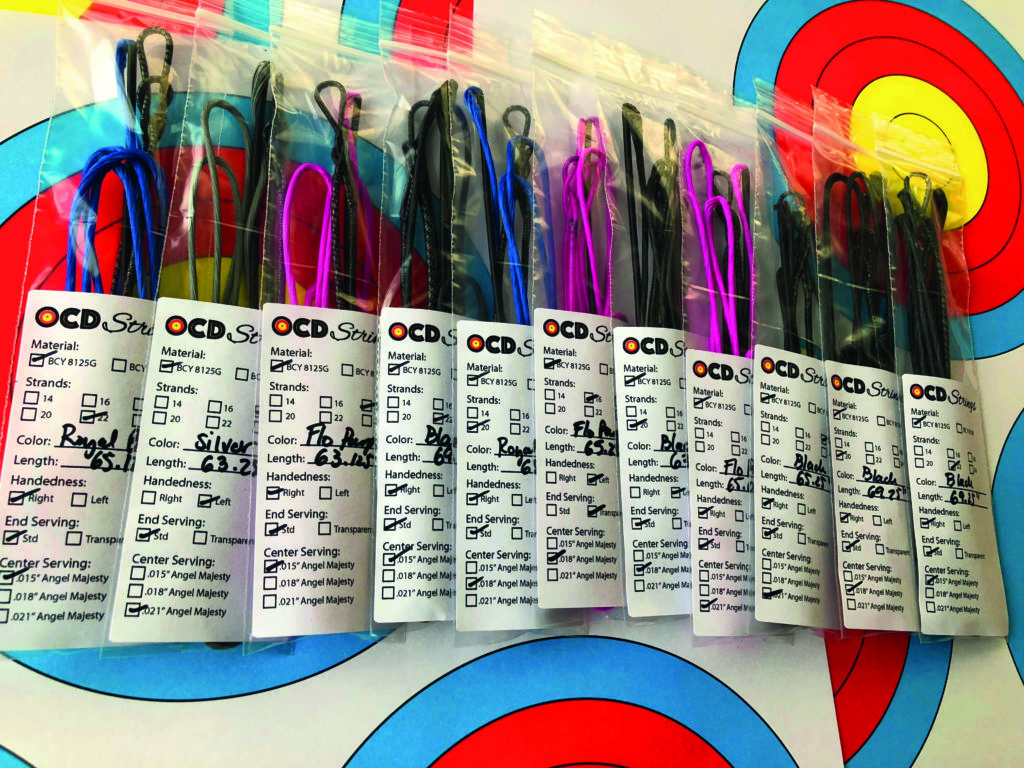
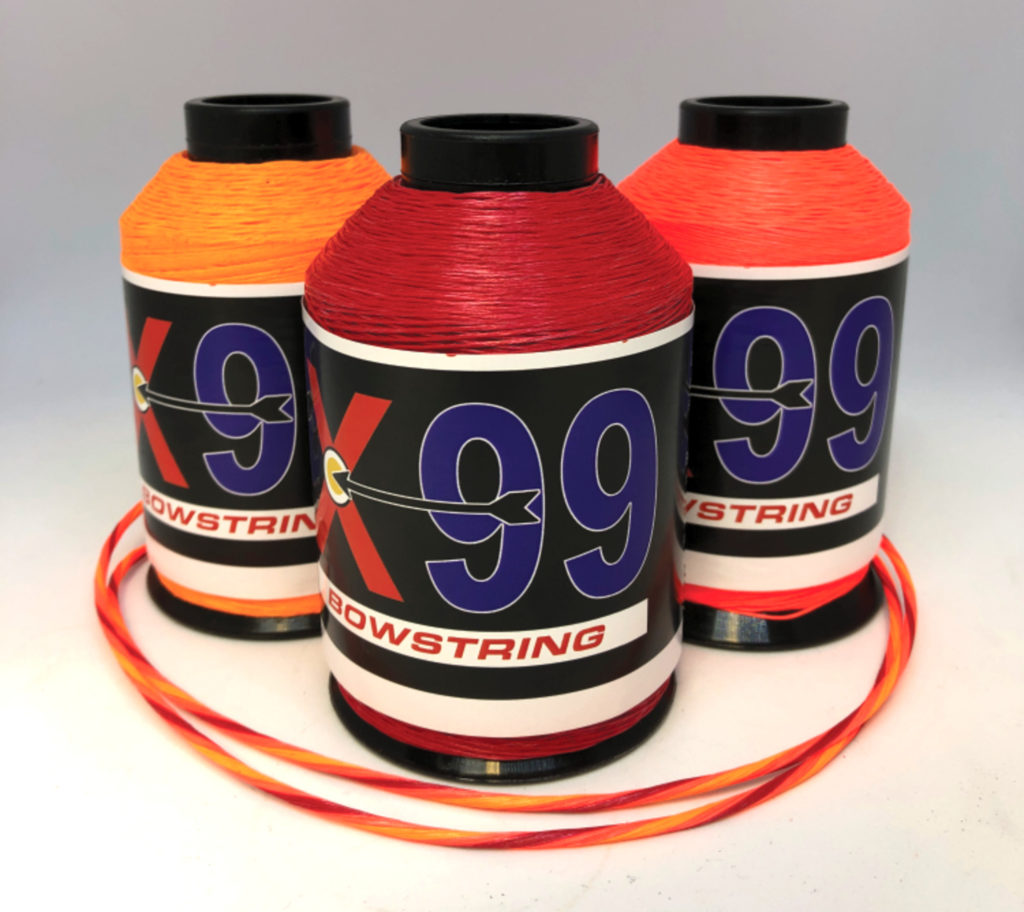
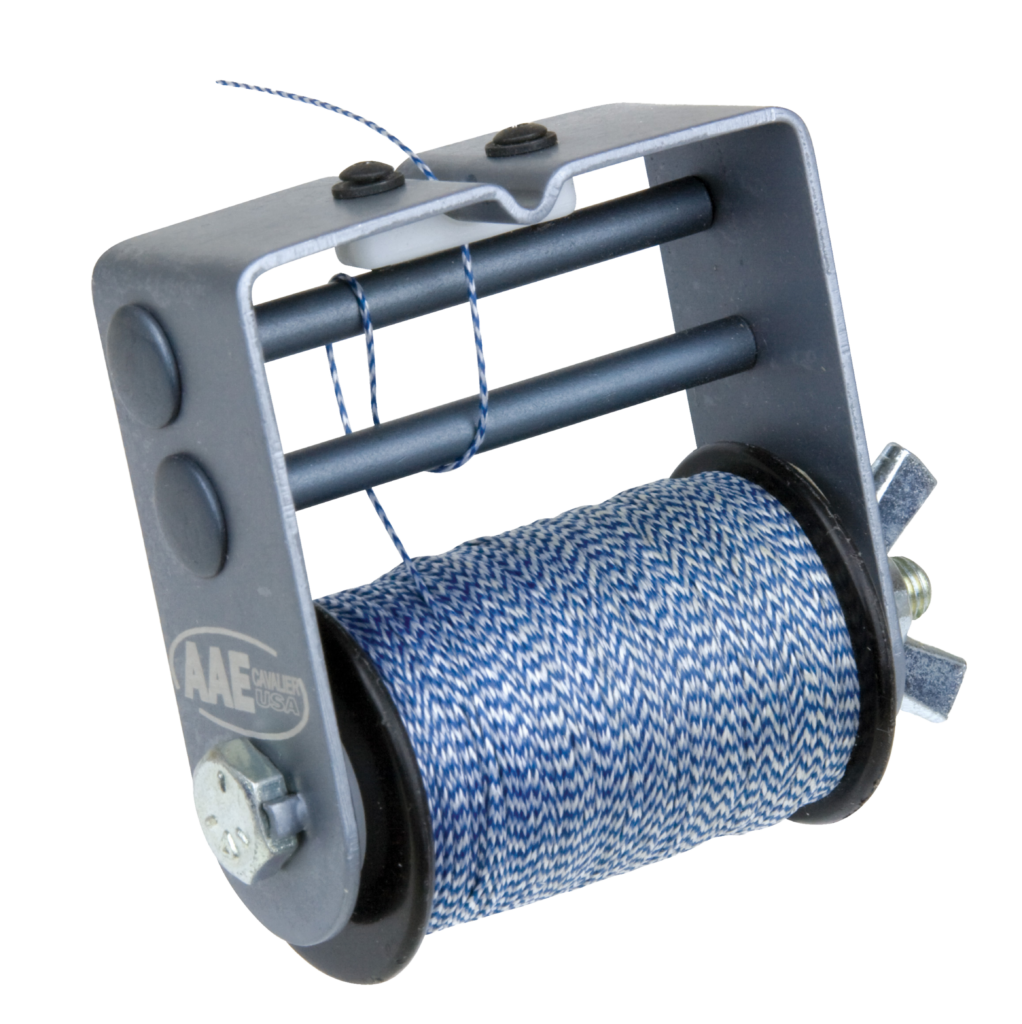
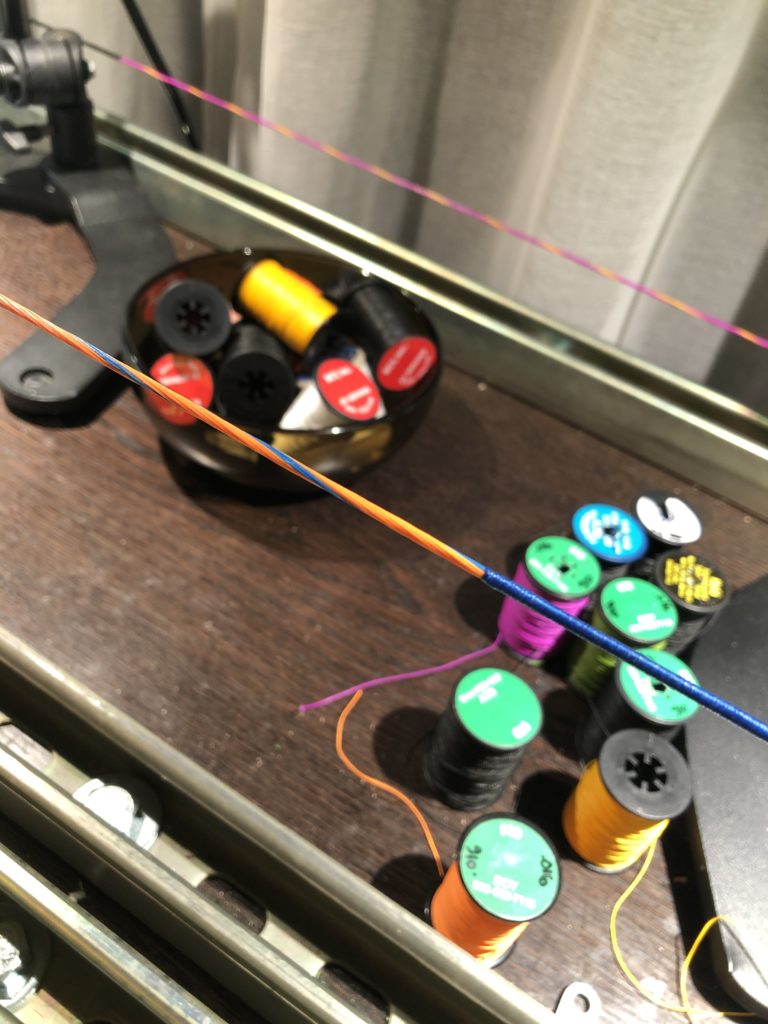
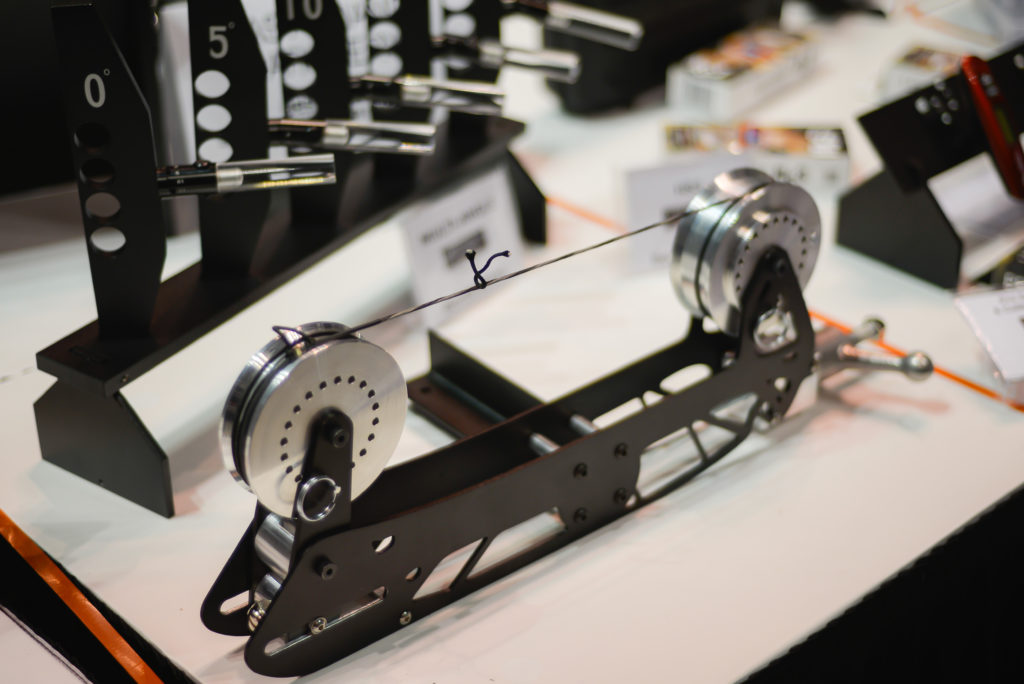
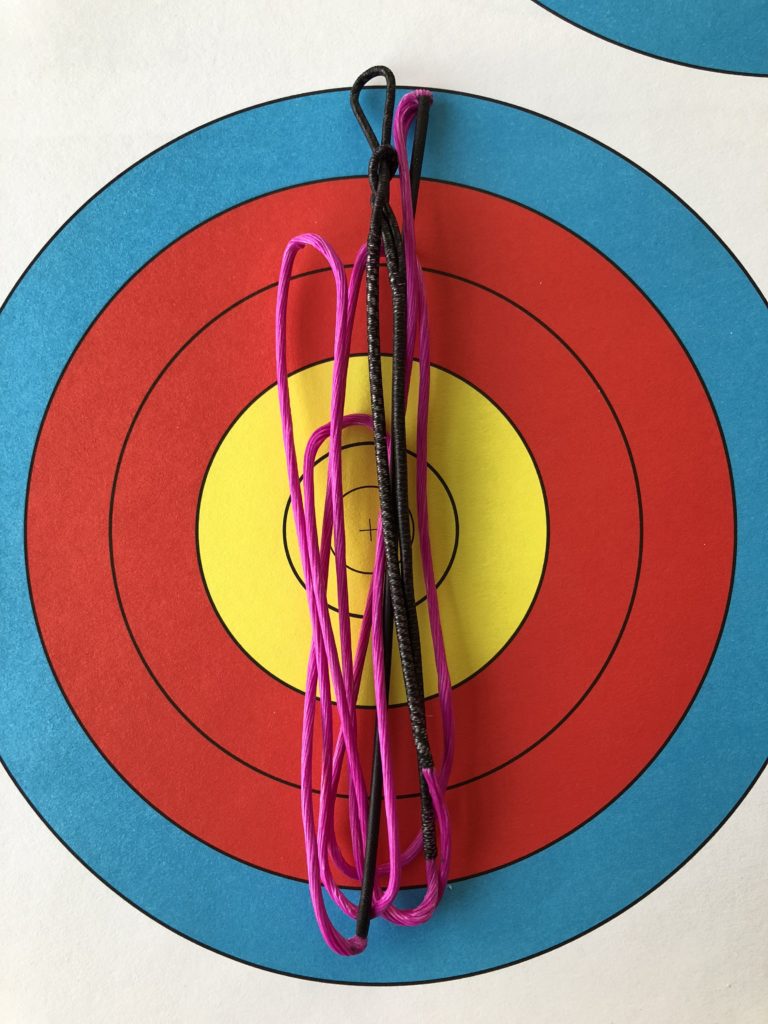
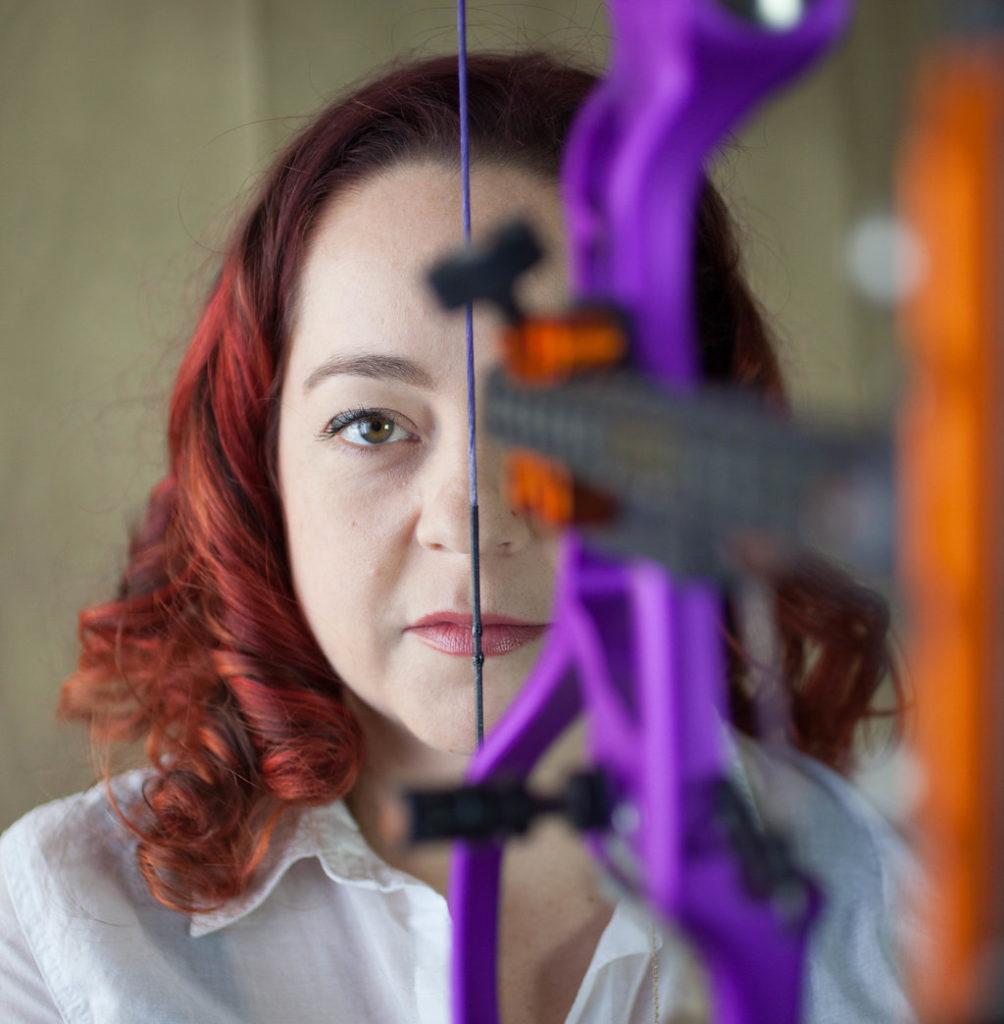
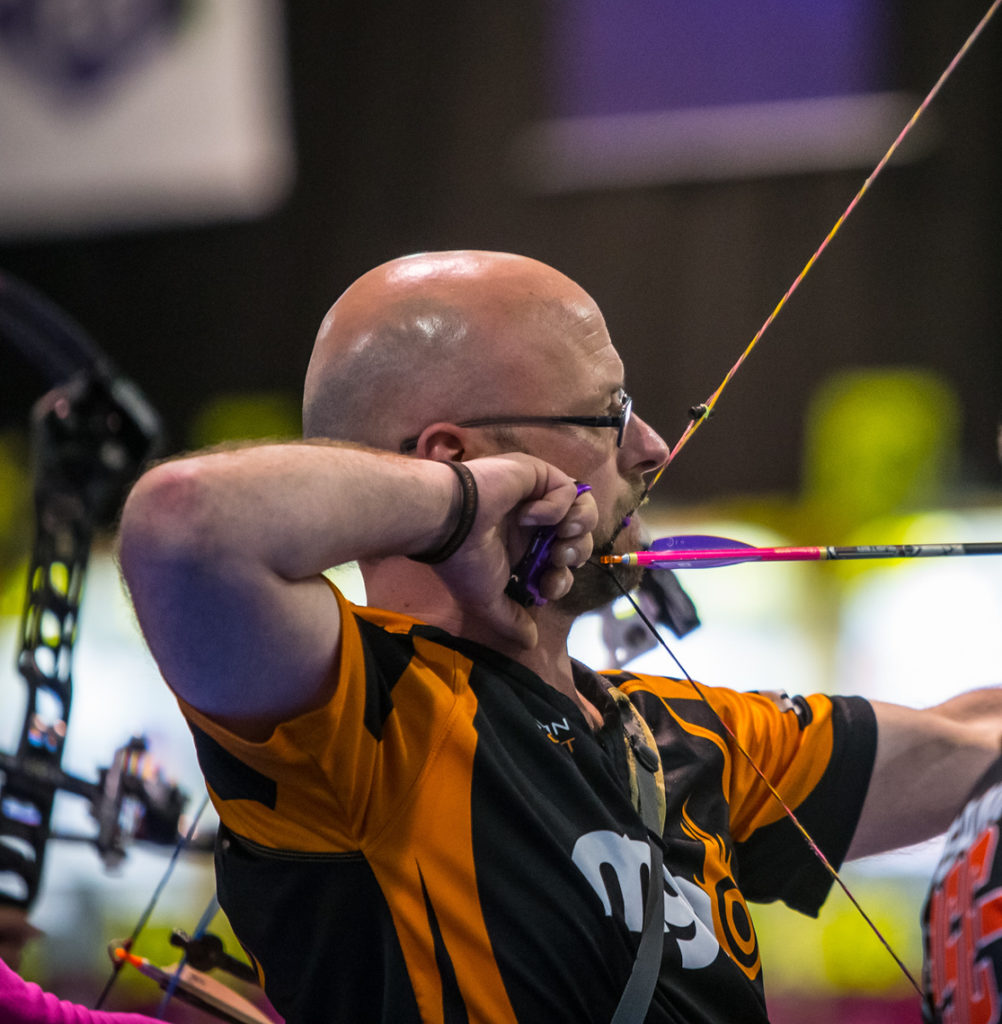

Thank you I never realized there was so much information on strings I shoot a cross bow and I am a beginner if you have any further information please let me know thank you
Sincerely Emerson martin
I have just acquired my first bow. The string I got wit it has sever Al strands. Do I twist these together prior to fitting to the bow?